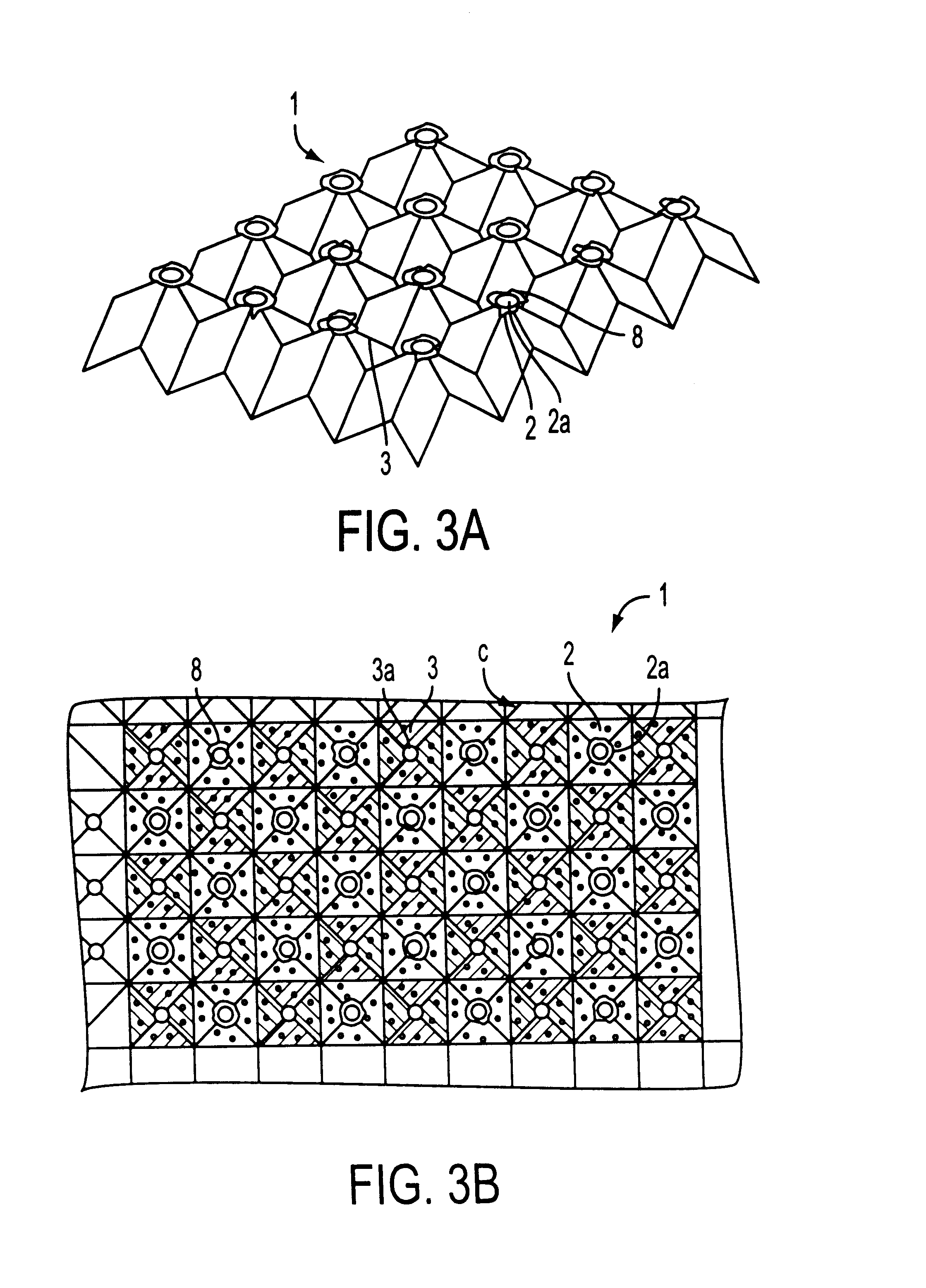Method of manufacturing battery electrode substrate and battery electrode substrate
a battery electrode and substrate technology, applied in the field of manufacturing battery electrode substrates and battery electrode substrates, can solve the problems of deteriorating reactivity of active substances, battery characteristics are inferior, and the active substance is likely to separate and drop there, so as to improve the performance of batteries, and reduce the pitch between pores each formed at the apex of each of the concave portions and convex portions.
- Summary
- Abstract
- Description
- Claims
- Application Information
AI Technical Summary
Benefits of technology
Problems solved by technology
Method used
Image
Examples
Embodiment Construction
The embodiments of the present invention will be described below with reference to drawings.
FIGS. 1 through 5 show the first embodiment of the present invention. A plate (S) for a battery electrode of the first embodiment is constructed by layering a large number of metal sheets 1 each of which consists of a nickel foil having a thickness 10 μm-100 μm (15 μm in this embodiment) and which has concave portions and convex portions formed on its entire surface by embossing the sheet.
As shown in FIG. 2, the method of manufacturing each of the above-described metal sheets 1 is carried out by passing a thin flat metal sheet 1′ between embossing rolls 20A and 20B and between the embossing roll 20B and an embossing roll 20C. In the above-described embossing rolls 20A, 20B and 20C, pyramidal fine convex portions 21 are densely formed on the entire outer surface thereof, and pyramidal concave portions 22 are formed between the convex portions 21. Initially, when the metal sheet 1′ is passed be...
PUM
 Login to View More
Login to View More Abstract
Description
Claims
Application Information
 Login to View More
Login to View More - R&D
- Intellectual Property
- Life Sciences
- Materials
- Tech Scout
- Unparalleled Data Quality
- Higher Quality Content
- 60% Fewer Hallucinations
Browse by: Latest US Patents, China's latest patents, Technical Efficacy Thesaurus, Application Domain, Technology Topic, Popular Technical Reports.
© 2025 PatSnap. All rights reserved.Legal|Privacy policy|Modern Slavery Act Transparency Statement|Sitemap|About US| Contact US: help@patsnap.com



